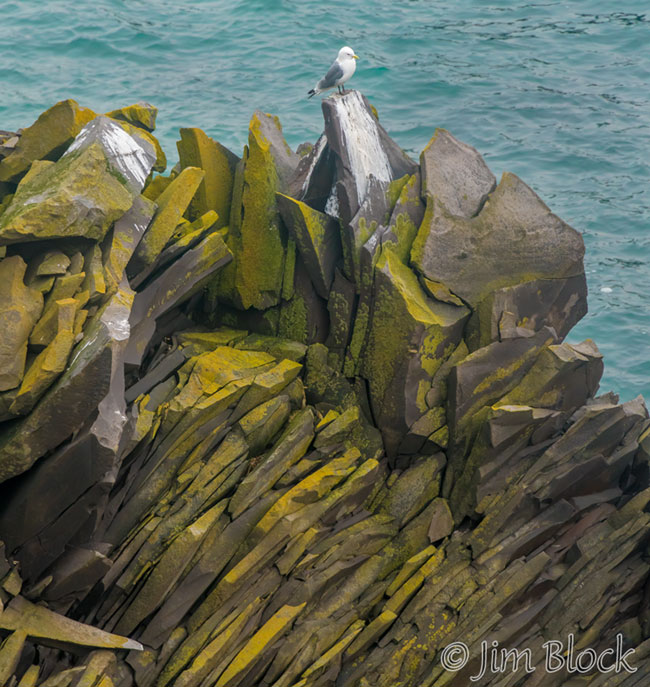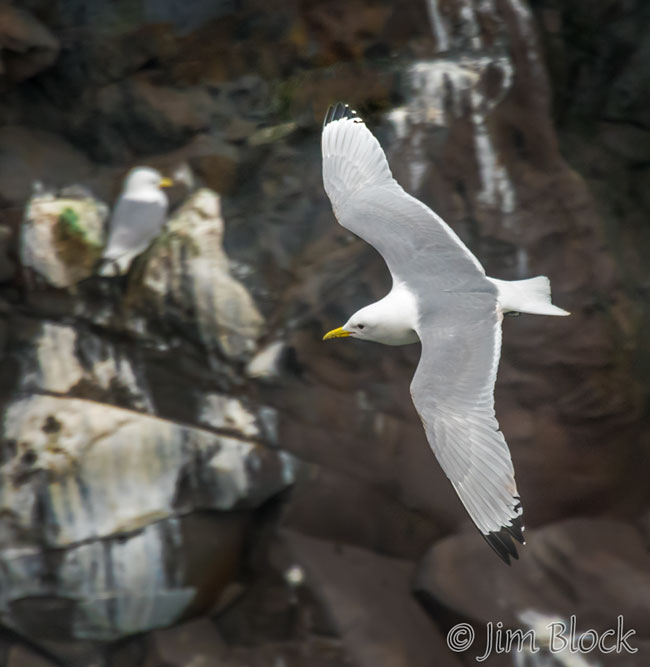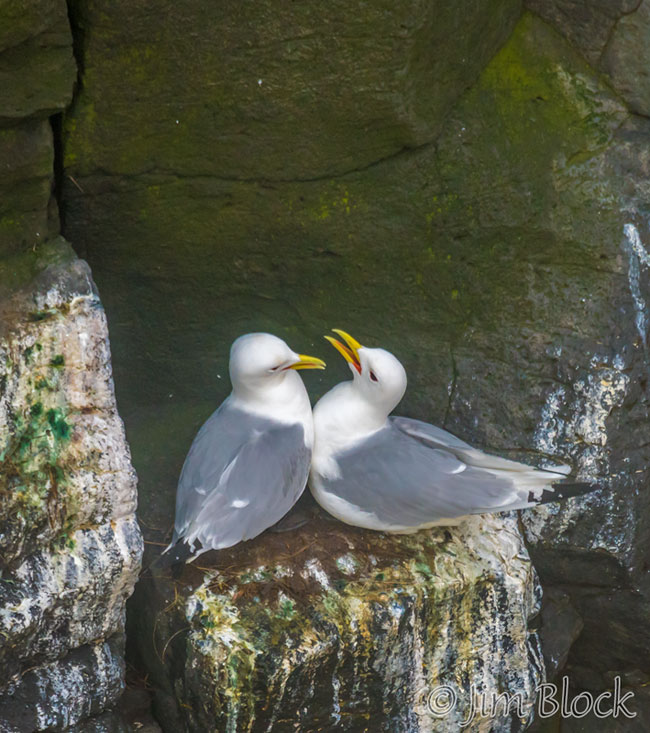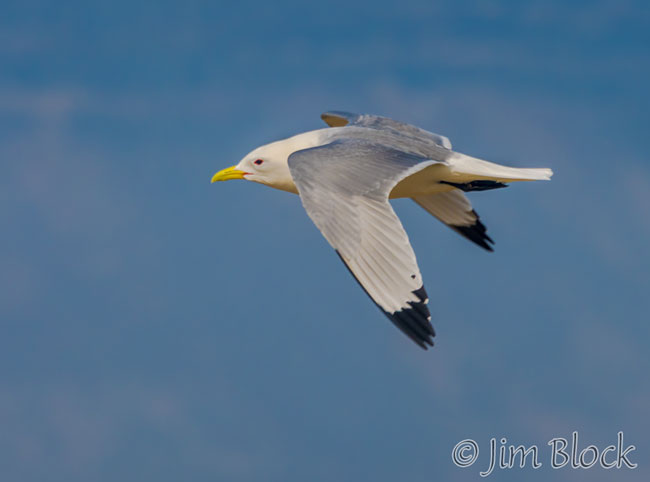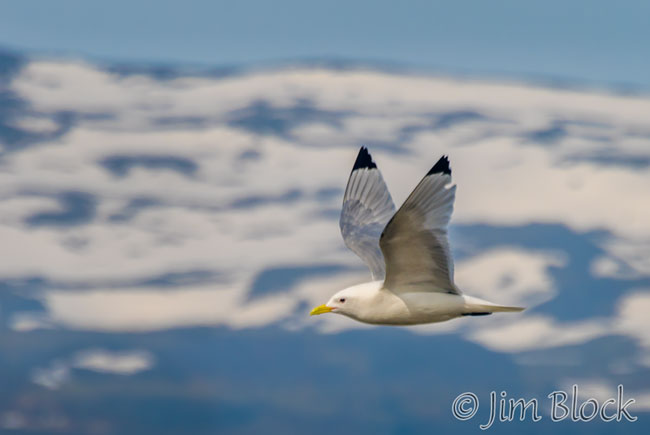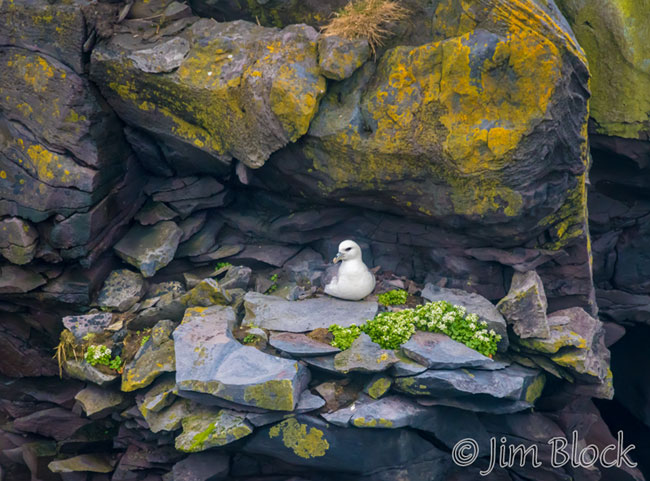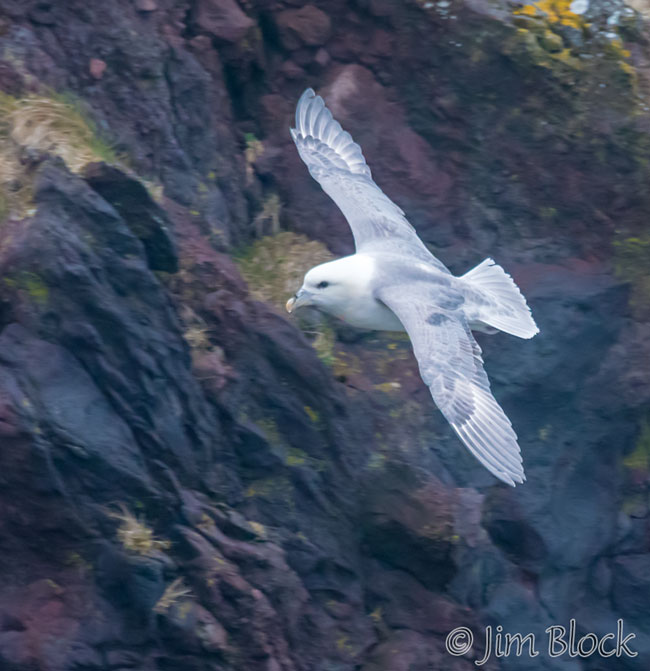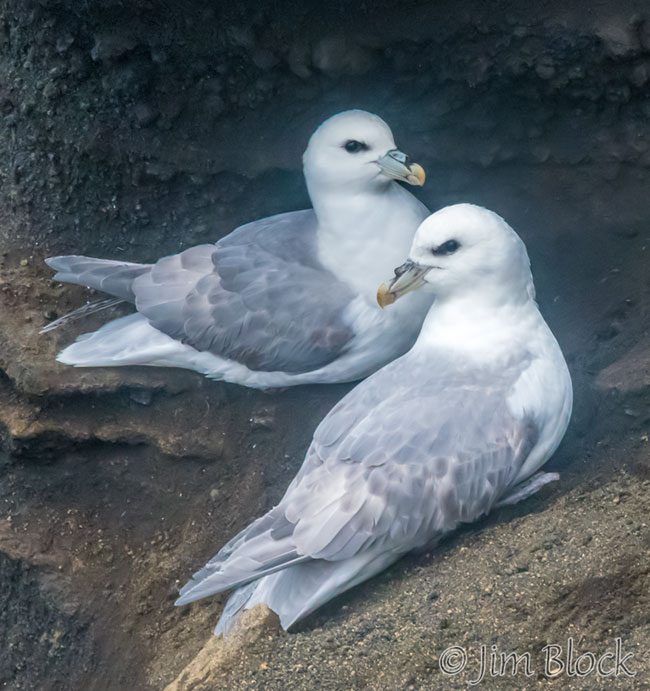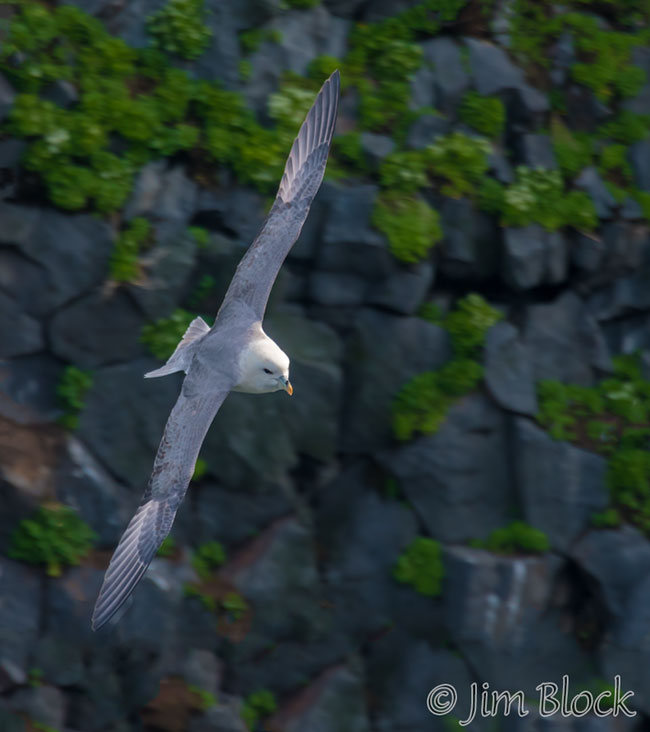Along the southwestern coast of the Snaefellsnes Peninsula of Iceland, between Hellnar and Arnarstapi, are wonderful cliffs where seabirds nest –the Pufubjarg Bird Cliffs. One can walk the 2.5 km distance between the two villages along well-trodden trails and nicely-constructed boardwalks. Leaving these trails just a short distance allows one to carefully peer over the edge of the cliff to see huge colonies of seabirds. This is best done lying on the ground.
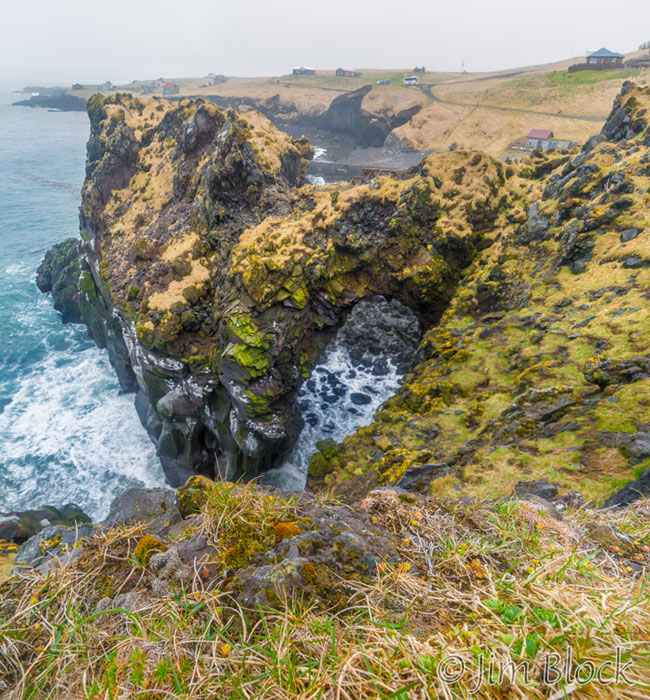
Although these cliffs are not nearly as extensive as the amazing Latrabjarg Bird Cliffs on the far southwestern tip of the Westfjords of Iceland — Europe’s largest which we visited later in our trip — they are still filled with many hundreds (thousands?) of gulls.
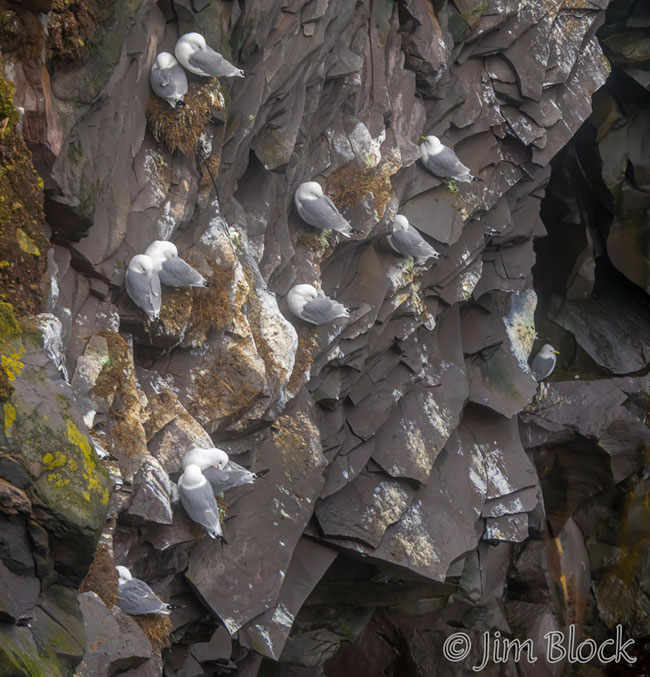
I certainly do not profess to be an expert in seabird identification — far from it. However, as I examined my photos, I was able to readily identify a Great Black-backed Gull, a species I have seen in NH and ME.
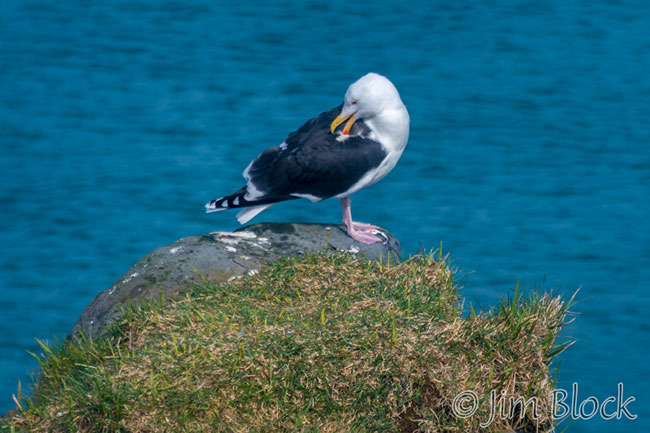 A little more work revealed that the gull with the black-tipped wings is a Kittiwake, a first for me. Some websites that showed pictures of the gulls of Iceland helped here.
A little more work revealed that the gull with the black-tipped wings is a Kittiwake, a first for me. Some websites that showed pictures of the gulls of Iceland helped here.
There was one bird that got my attention because she was perched in a prime spot out of the wind facing inland and with a beautiful “garden” around her.

But I struggled to identify this bird even though the species had a very distinctive bill, as seen in the photos below. That bill should have tipped me off because I have seen similar bills on petrels before, but it did not. There were gulls everywhere and that is all I seemed to focus on.
I scanned photos of gulls of Iceland on the web, studied all the drawings of gulls in Sibley, and then I remembered I had a book by Peter Harrison, “Seabirds: An Identification Guide”, considered the bible of seabird identification. Peter Harrison is an amazing artist and an enthusiastic conservationist. He “dropped out” of a normal life and as a young man set out on a seven-year adventure with his wife researching and drawing the seabirds of the world.
Jann and I traveled with Peter Harrison and his wife to South Georgia Island in 2001. During his spare times on the boat, Peter would stand in a public area and create a painting of what we saw that day. He would then sell these drawings to raise money to help save the albatross. He also created a large mural which depicted the entire trip. At the end of our voyage he auctioned this off. That auction creeped up several hundred dollars at a time to somewhere between $2000-3000. Just when it seemed like the bidding might die, a voice rang out, “$10,000”. A professor from MIT silenced everyone and purchased the beautiful memorial of our trip.
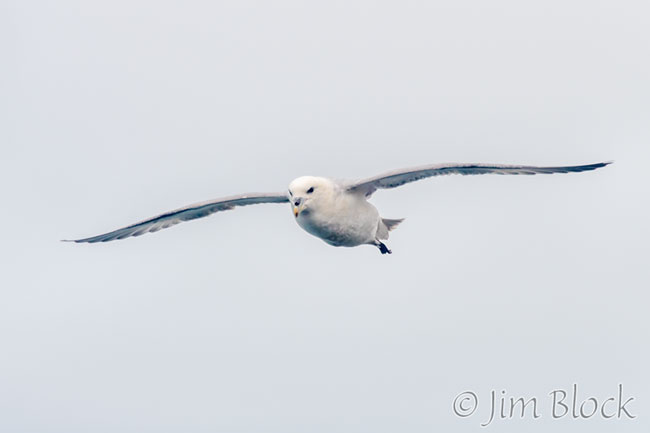
So I consulted Peter Harrison’s book, which is filled with detailed drawings of around 75 different gull species. I struck out. No luck. Then I started looking at other pages and noticed a resemblance between the bill of the bird I photographed and those of petrels and shearwaters. So I expanded my search and found fulmar. Eureka!!! Turns out I got pictures of Northern Fulmars. After finding Northern Fulmar in Harrison’s book I looked and saw it was also in Sibley. I just had to get beyond my concept that this gull was a gull.
Near the northeastern end of this series of bird cliffs is an amazing “sea window” named Gatklettur.
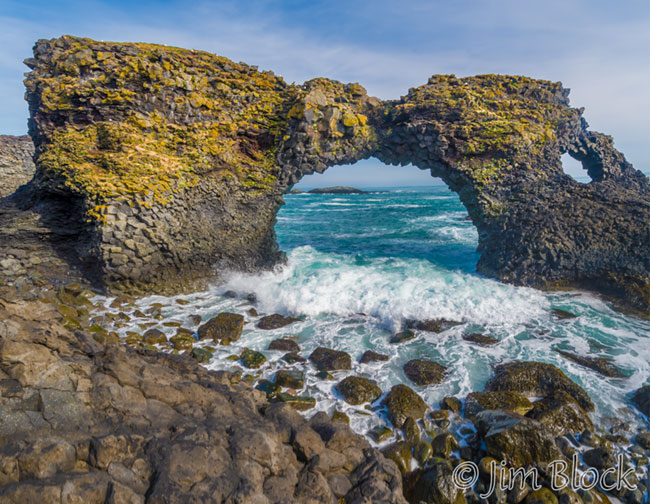
In Arnarstapi a lone house sits in a beautiful spot a bit away from the small village.
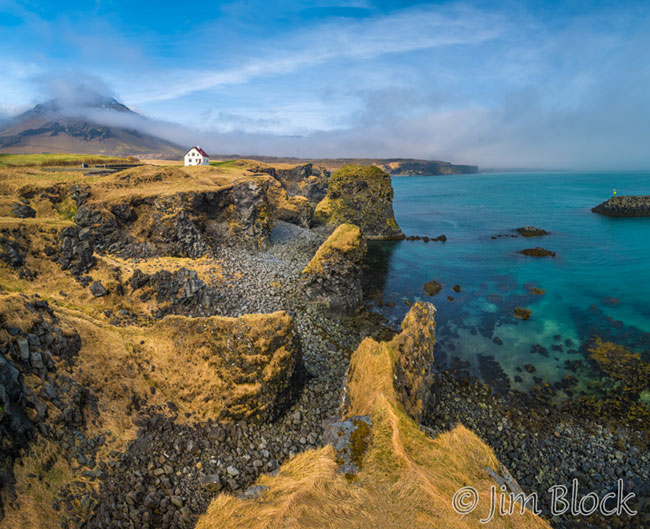
If you get to Iceland, this stretch of coast is not to be missed.

